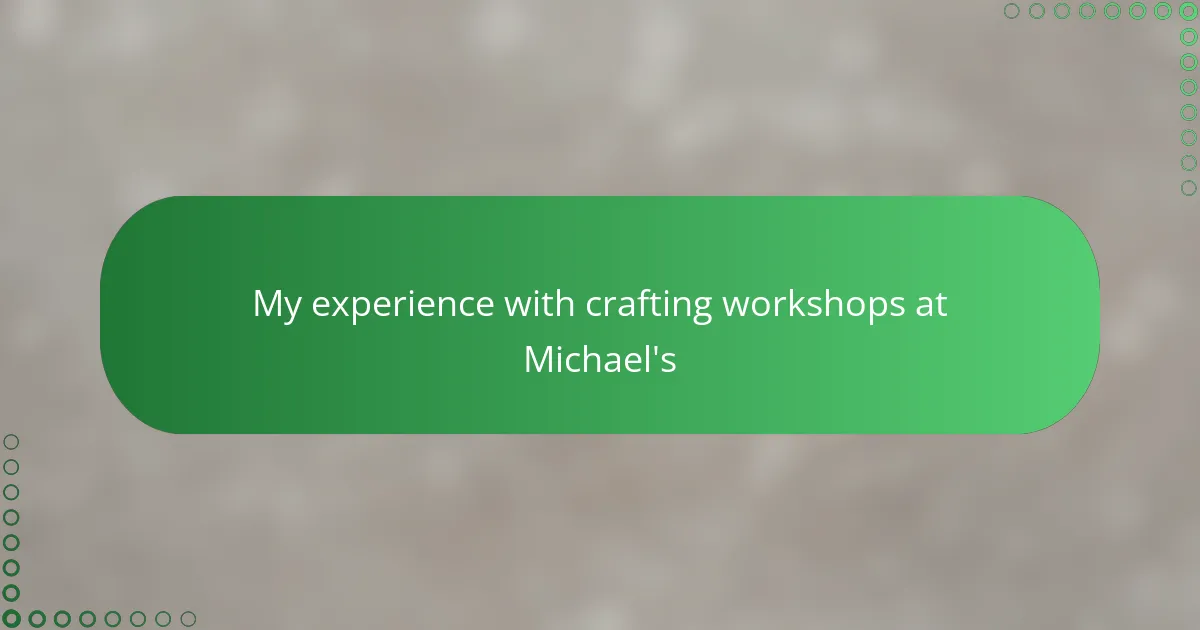Key takeaways
- Understanding the qualities of handmade paper enhances creativity and authentic craftsmanship.
- Quality materials and hands-on learning during workshops lead to engaging and successful crafting experiences.
- Mastering techniques like precise cutting and paper folding elevates the quality of handmade projects.
- Slowing down and embracing mistakes can transform challenges into unique creative opportunities.
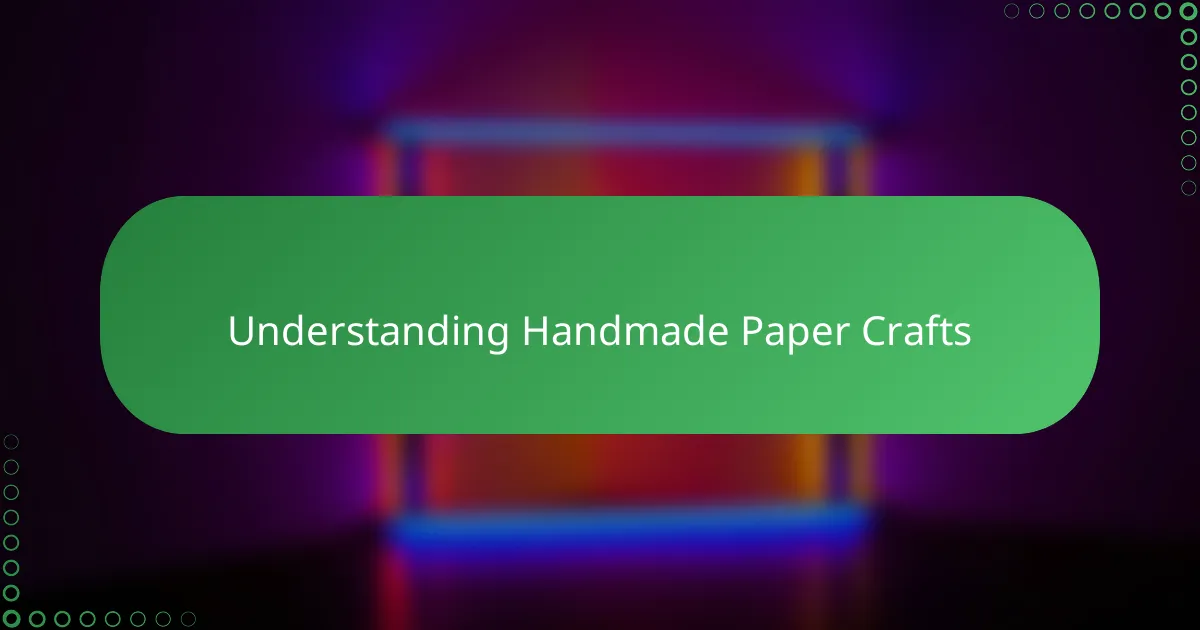
Understanding handmade paper crafts
Handmade paper crafts have always felt like a special way to connect with creativity for me. There’s something almost magical about transforming simple sheets of paper into meaningful art. Have you ever paused to think about how different textures and colors can completely change the story a piece tells?
From my experience, understanding the nuances of handmade paper—like its weight, grain, and absorbency—makes all the difference. It’s like getting to know a new friend; once you understand its character, your craft flows much easier and feels more authentic. Isn’t that the beauty of working with your hands? You learn to listen to the materials as much as to your own inspiration.
What intrigues me most is how handmade paper crafts blend technique with personal expression. Each fold, cut, or brushstroke carries a little piece of the creator’s mood and mind. Thinking back, every workshop helped me see my creations not just as projects, but as reflections of moments and emotions. Have you noticed this yourself when you craft?
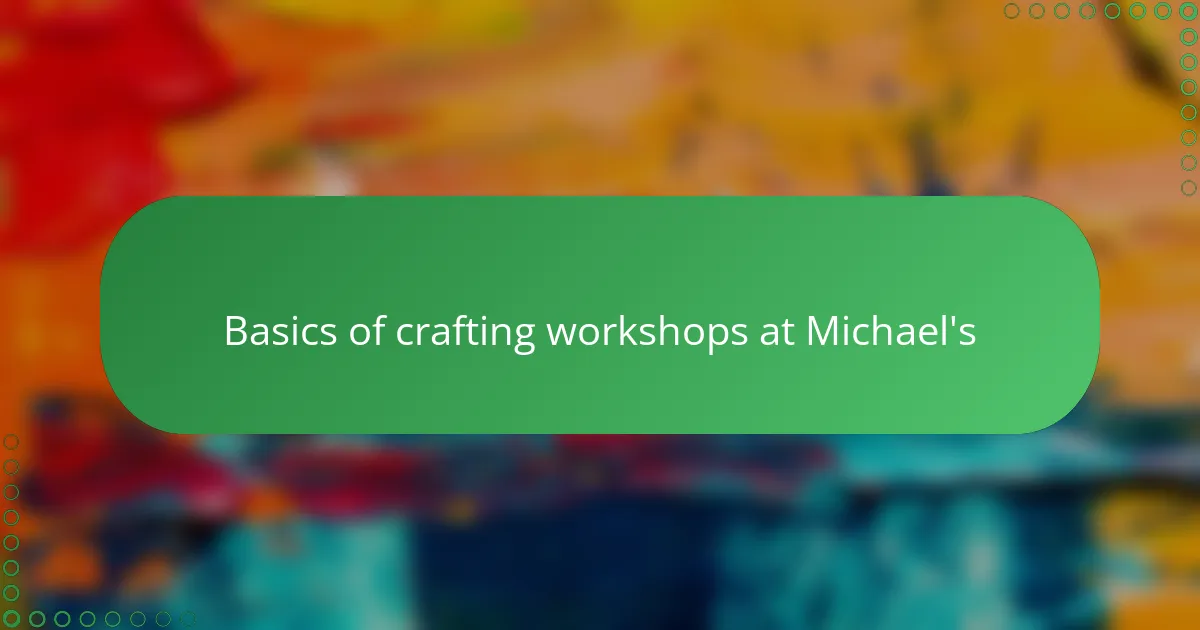
Basics of crafting workshops at Michael’s
When I first walked into a Michaels crafting workshop, I wasn’t quite sure what to expect, but the basics were immediately clear. The instructors always start by breaking down the project step-by-step, making even the most intricate designs feel approachable. Have you ever been in a space where you suddenly feel confident just because everything is explained so clearly?
What stood out to me was how the workshops emphasize hands-on learning. Instead of just watching, I was encouraged to dive in right away, which made the experience more engaging—and honestly, more fun. That moment when you realize you’re not just following instructions but actually creating something unique? It’s priceless.
Also, Michaels offers all the supplies you need, which took away a lot of stress from planning. Having beautiful, quality materials right at my fingertips added a special touch to each project. Don’t you find that using good materials changes how invested you feel in what you’re making? For me, it definitely did.
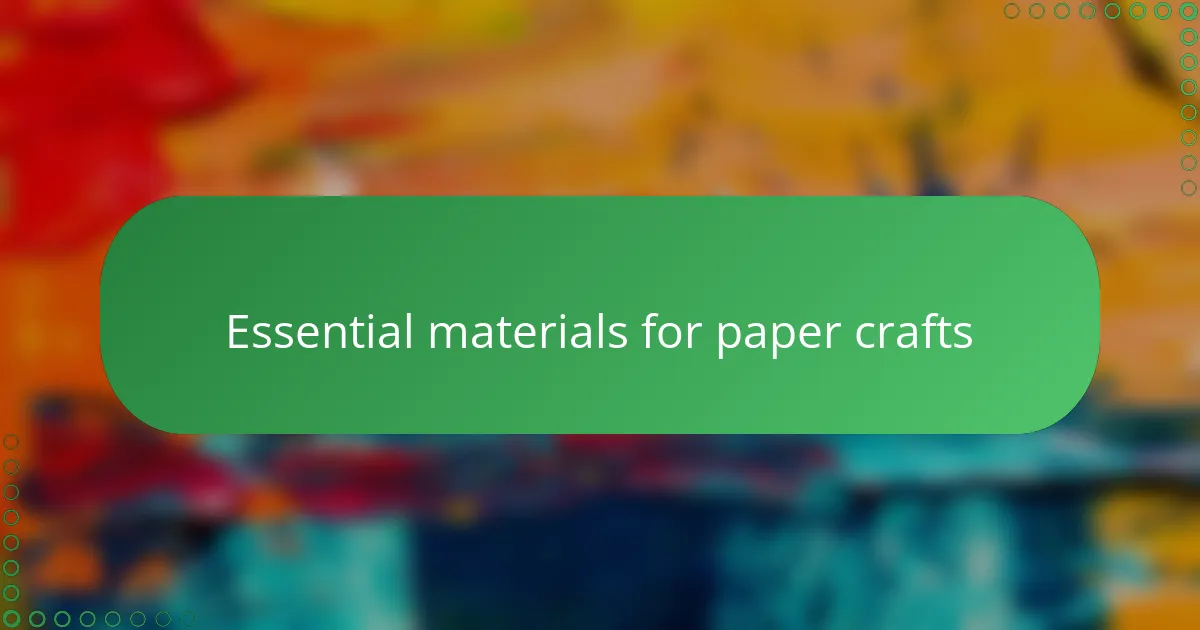
Essential materials for paper crafts
One thing I quickly learned is that quality paper is the heart of any paper craft. Picking the right type—whether it’s textured, smooth, or handmade—can make your project either sing or fall flat. Have you ever started a craft only to realize the paper just isn’t cooperating? That frustration stuck with me until I understood how important paper weight and texture really are.
Scissors and glue might sound basic, but they’re essentials that can’t be underestimated. I remember struggling with a project until I switched to sharp, precision scissors from Michaels—cutting became so much cleaner, and my confidence soared. And don’t get me started on glue: a good adhesive that dries clear and holds strong saved many of my delicate paper layers from disaster.
Then there are embellishments and tools like bone folders, tweezers, and decorative punches that feel like magic once you know how to use them. I used to think these were just optional extras, but after a few workshops, I realized they’re what elevate a good craft into something truly special. Have you tried folding paper with a bone folder yet? It’s such a satisfying way to create crisp, professional edges that make a piece feel well-crafted.
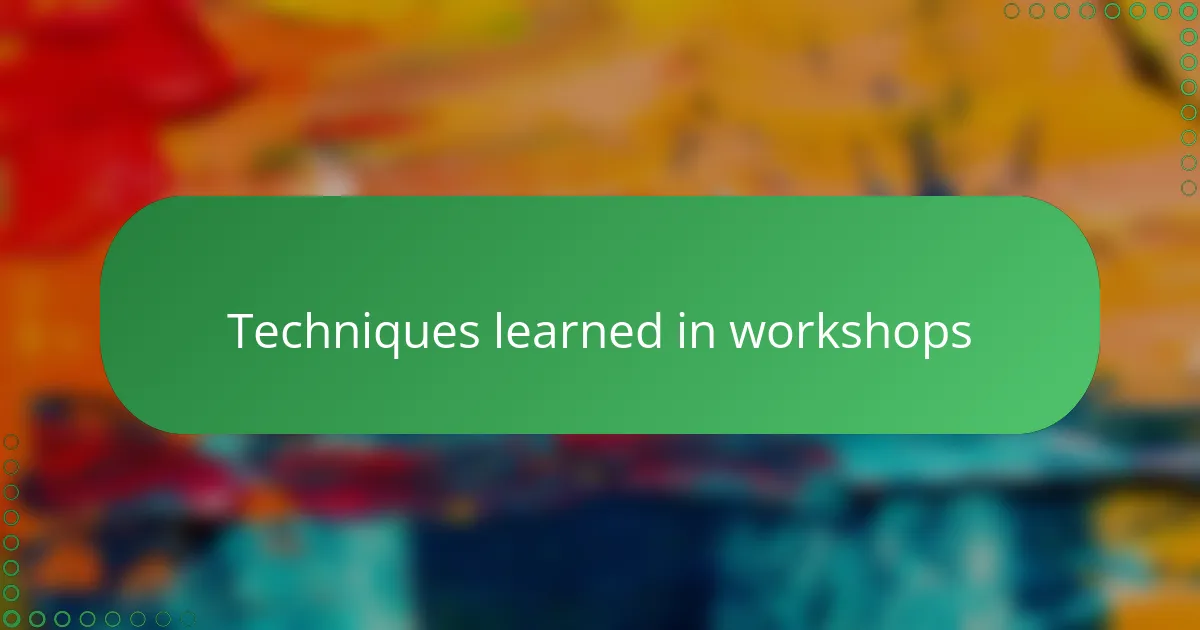
Techniques learned in workshops
One technique that really stuck with me from the Michaels workshops was mastering paper folding methods like origami basics and scoring. I hadn’t realized how much a precise fold could change the entire look and stability of a project until I practiced it under expert guidance. Have you ever been surprised by how a simple fold can add sophistication and structure?
Cutting techniques were another game-changer. Learning how to make smooth, clean cuts and safely use different kinds of craft knives boosted my confidence tremendously. I remember fumbling through a card design before, but after a few tips from the instructor, my cuts looked sharper and my projects, more polished.
The workshops also introduced me to layering and embellishing in ways I hadn’t tried before. Adding textures and combining colors thoughtfully felt like painting with paper, which was both fun and challenging. It made me wonder—how often do we underestimate the power of small details in elevating our handmade creations?
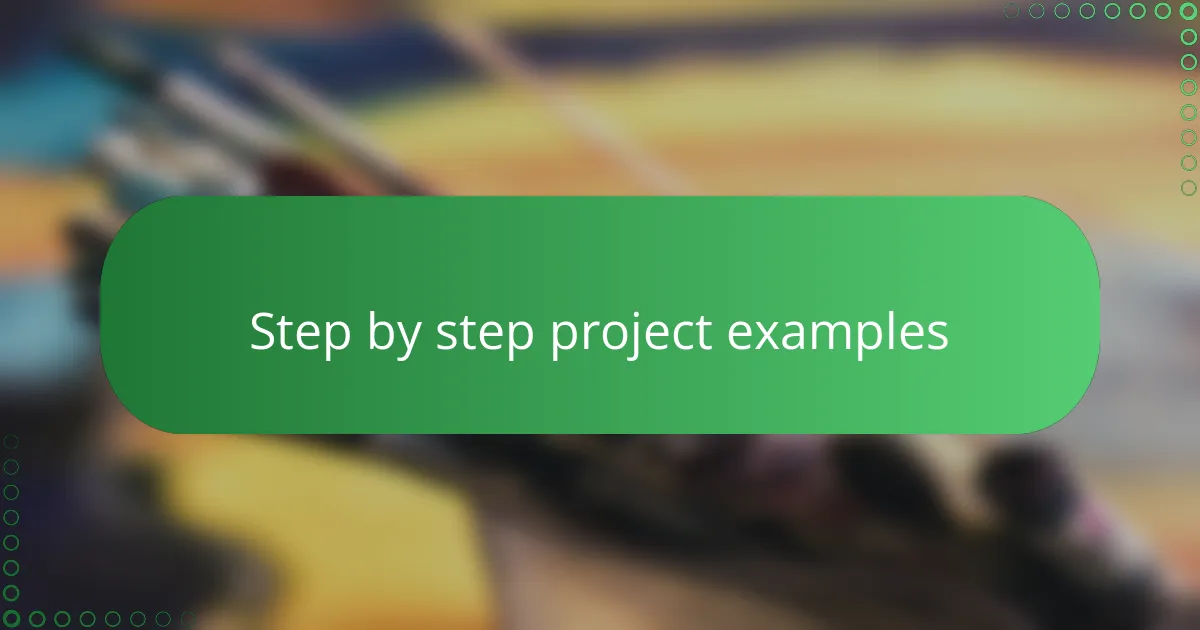
Step by step project examples
I recall one project where the instructor walked us through creating a layered paper card, breaking it down into clear, manageable steps. Watching each step unfold made me realize how important pacing is—rushing only leads to frustration, but following the sequence gives a sense of accomplishment at every stage. Have you noticed how step-by-step guidance takes away the overwhelm and lets creativity shine?
Another project involved making a textured paper flower, starting from cutting petal shapes to assembling them delicately. I was initially nervous about getting the layers right, but the hands-on approach helped me see exactly where each piece fit. It reminded me that crafting is as much about patience as it is about precision.
The most memorable example was a mixed-media paper collage where the instructor showed us how to build depth by layering different papers and embellishments gradually. I found myself lost in the process, encouraged by how small steps added up to something truly vibrant. Does breaking down complex projects this way make you feel more confident too? For me, it transformed crafting from intimidating to inviting.
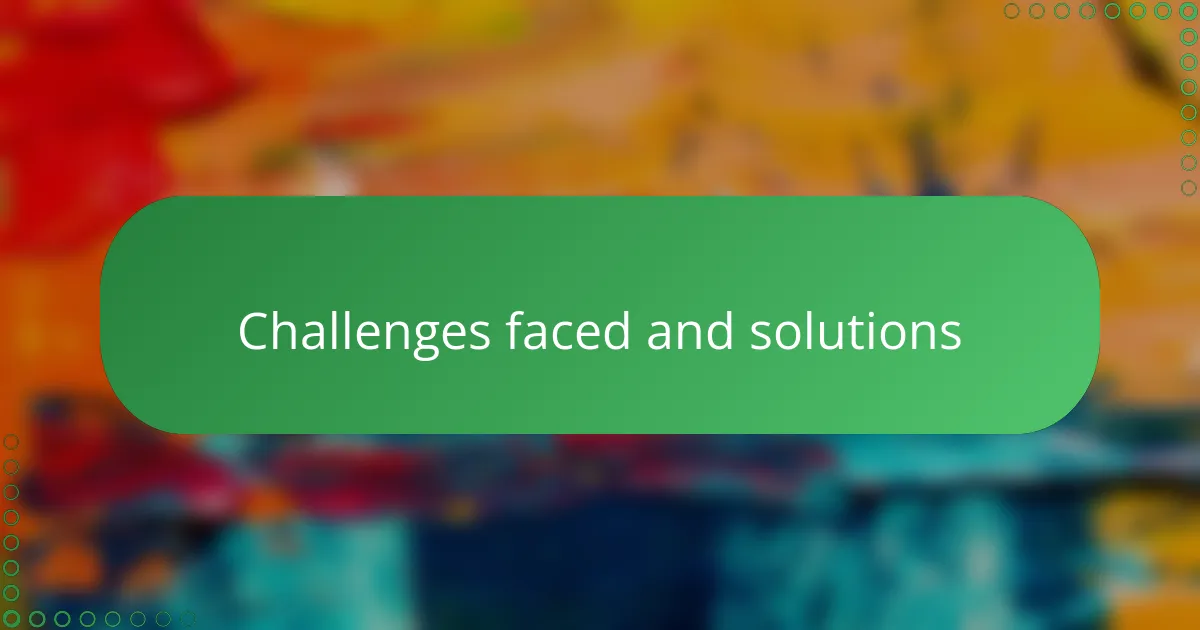
Challenges faced and solutions
One challenge I faced during these workshops was managing time because the projects, while clearly broken down, sometimes took longer than I expected. I learned to embrace slowing down and really savoring each step instead of rushing, which actually improved my results. Have you ever felt that slowing your pace unexpectedly brings out the best in your work?
Another tricky part was mastering precision with tools like craft knives and scoring tools. Initially, my cuts weren’t as clean as I hoped, and that was frustrating. But with patient guidance and practice, I found my confidence growing, proving that persistence really pays off when learning new techniques.
Lastly, dealing with delicate handmade paper often meant things didn’t always go as planned—like tears or uneven folds. I started seeing these as opportunities rather than setbacks, experimenting with layering or embellishments to turn imperfections into unique features. Isn’t it wonderful how a little creativity can transform a “mistake” into a charming detail?
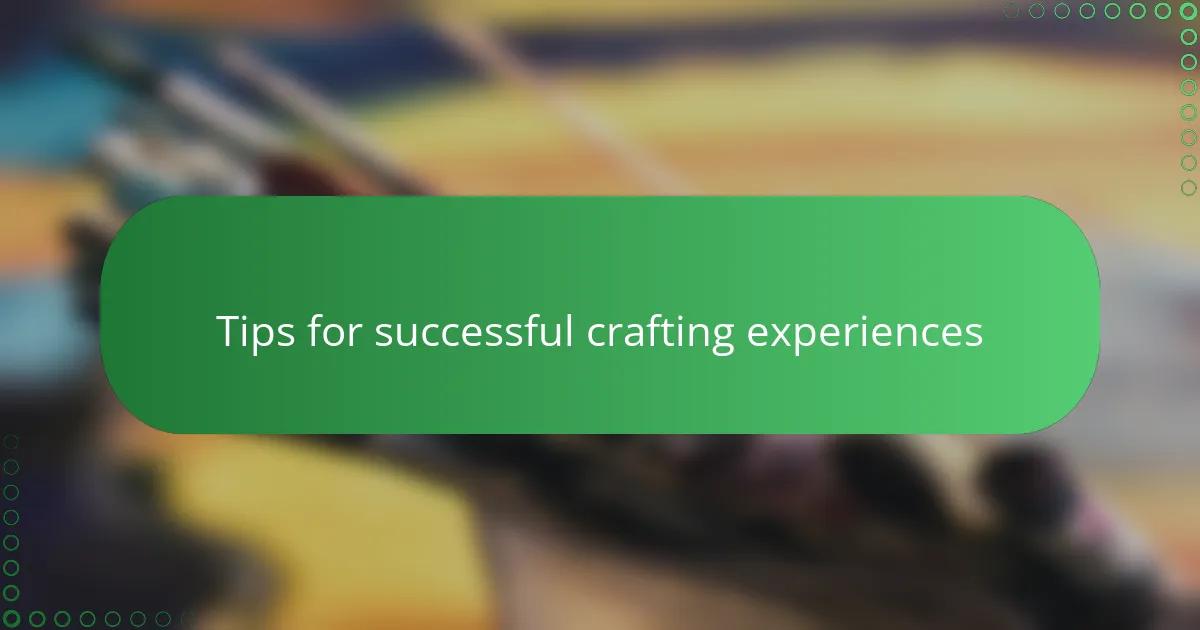
Tips for successful crafting experiences
Taking the time to prepare before a workshop really changed the way I approached crafting. I found that bringing a clear mindset and an openness to learn made the process smoother and more enjoyable. Have you noticed how showing up with curiosity instead of pressure allows creativity to flourish?
Another tip I swear by is not rushing through the steps. When I finally slowed down and focused on each stage, rather than racing to finish, my projects felt more meaningful and my mistakes became learning moments. Isn’t it amazing how patience can turn frustration into satisfaction?
Lastly, don’t hesitate to ask questions or seek help during the workshops. I used to hesitate, thinking I might slow the group down, but every time I spoke up, I gained new insights that improved my craft. Have you found that a little guidance often opens doors you didn’t even know were there?
